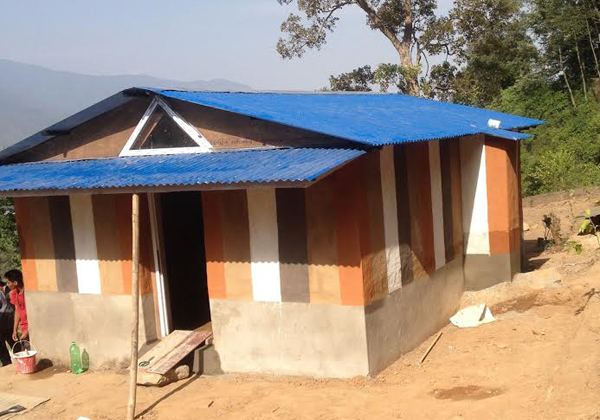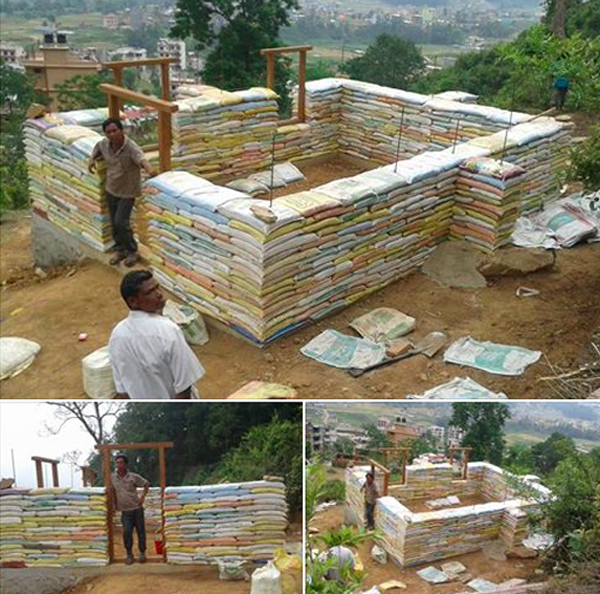
“Now Kathmandu’s outskirts also have an earthbag building! It will be used as an after-school house for the children of Goldhunga, a village located 30-minute drive from Thamel, in Kathmandu. It will be soon filled with computers, books and other supplies. Its size is 10x15ft and it is composed of one room and one floor.

The building started in the aftermath of the earthquake that hit Nepal in April. It’s on government land. It was funded by Phulkharka EQ-Support Fund, created under the Holy Himalaya social support project. Jyoti Adhikari, team leader of the Holy Himalaya Group, told me ” it is house for hope… on the sad memories of the earthquake”. Joyti thinks this new building should be a model house and he hopes it will give many local people a good idea of how to rebuild their homes or shelters. The way it was done – many people working all together – also offered the local people a good example of how they could team up to support their own people and area. The work started on May 3rd, so it took a little bit less than a month to complete the building. A lot of workers coming from the local community took part in the building and food was offered all the way along. Jyoti says two engineers from his team learned everything about earthbag building techniques from Owen Geiger’s earthbag building guide. On June 5th this after-school building was inaugurated, and many politicians attended the event.”
Special thanks to Alice and Anu of Help Himalaya Adventure Girls for this story.

I want to go see the school. What is the name of school and where is it located?
It is located in Goldhunga, Nepal and simply an after-school earthbag building.
Inauguration video: https://www.youtube.com/watch?v=ZJfnCZ71FEQ
Rammed earth solutions did work that project.
What do you mean?
Comment from Alice: The cost was 5000 USD. But as some noticed, the bags are half filled, causing major increase in the price.
Owen: Costs vary considerably from area to area. I’ve heard prices in Nepal have skyrocketed since the quake. The same building could probably be built at half cost in other places. So make a spreadsheet using local costs if you want to know what the building will cost where you live.
My YouTube videos show how to fill bags to maximum capacity to keep costs down. Note how the unknown strength of recycled bags creates risk. (Were the bags stored out of the sun for the entire time? Are all of the bags of high quality?) In earthquake zones, obviously you want the bags to be as strong as possible. Building with tubes may be the most practical option since tubing is readily available and much faster than building with bags. And using new materials helps assure a high level of strength. I say this because people in Nepal are telling me on some projects you can easily push your finger through the bags! Bags like this should not be used!!!!!
I would like to visit the place, can I please get contact number or anything so that I can contact to find location. I am near Goldhunga in Puranoguheswori though.
It’s only 100 meters or so below the highway to the ashram. As you’re going up the mountain look down and to your right. It’s on a big curve. It’s a distinctive multi-colored building all by itself. There’s a place you can pull over and a trail down to the building. You can also take the dirt road below but it’s terribly bumpy and not recommended.